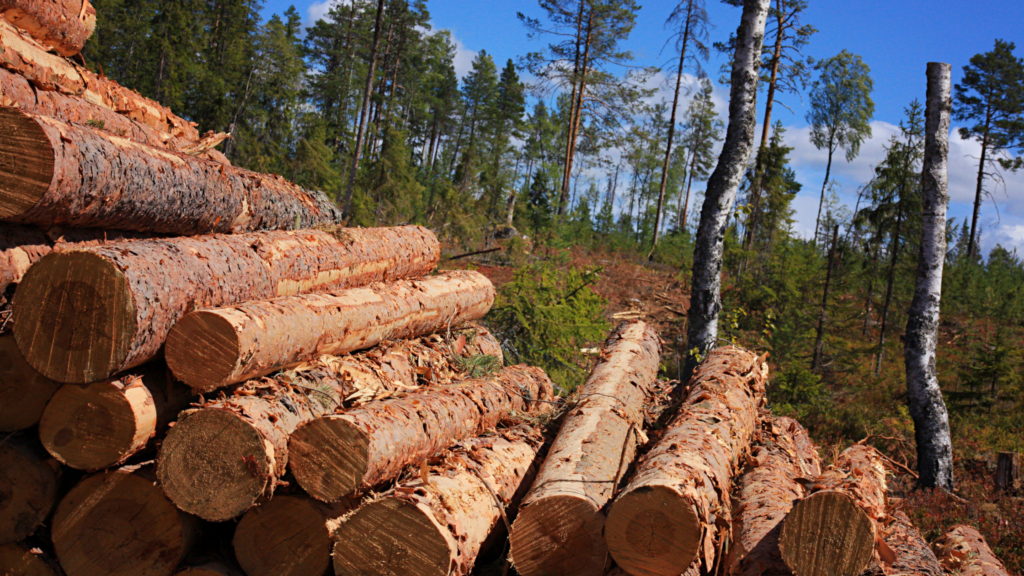As the world becomes increasingly conscious of the impact of climate change and the need for sustainable living and renewable resources, it is critical that the construction industry reduces its environmental footprint. One way of doing this is not only to reduce on-site waste, which can be accomplished with a vertically integrated building process but to utilize one of the most environmentally friendly and renewable resources: timber. In this blog, we will explore the sustainability and environmental factors that support the position that timber is the best material to build with compared with concrete, steel, and other energy-intensive materials.
The Environmental Benefits of Timber Construction
For developers, homeowners, and investors alike, prioritizing timber as a renewable resource in construction is crucial. It is important to recognize the value of timber, especially when considering Environmental, Social, and Governance (ESG) factors. Trees have the ability to sequester carbon, provide clean air, and can be replanted for future use, resulting in a carbon-neutral life cycle. By prioritizing end-of-life management for timber and other construction materials, the amount of landfill and construction waste can be drastically decreased.
According to the EPA (2023), “For every one percent increase in gross domestic product, raw material use has risen by 0.4 percent. This increasing consumption has come at a cost to the environment, including habitat destruction, biodiversity loss, overly stressed fisheries and desertification. Materials management is also associated with an estimated 42 percent of total U.S. greenhouse gas emissions. Failure to find more productive and sustainable ways to extract, use and manage materials, and change the relationship between material consumption and growth, has grave implications for our economy and society.”
When constructed with timber, buildings have a low carbon footprint especially if combined with sustainable design features. Wood is a carbon-neutral material that sequesters carbon from the atmosphere as it grows and according to FPL(2021), “Using wood products can also lower atmospheric carbon dioxide levels because growing forests capture carbon, and harvested wood products store the accumulated carbon while in use and when disposed of at end of life in landfills.” (FPL, 1-9).
Timber continues to store carbon for the duration of its lifespan which reduces the amount of CO2 released into the atmosphere. Using timber can also decrease energy costs since wood is a good insulation material.
The Social Benefits of Timber Construction
Timber construction can also have social benefits, particularly when building affordable housing. Timber buildings can be faster to construct than buildings of steel and concrete, resulting in reduced labor costs and allowing new homes to be built quicker. This can help address the shortage of affordable housing in many areas.
The use of wood in construction also has health benefits. Wood is a natural material that can improve indoor air quality by regulating humidity levels and reducing the presence of mold and other allergens. In addition, wood can create a warm and inviting atmosphere that can positively impact mental health.
The Economic Benefits of Timber Construction
The economic benefits of timber are also important to consider. Timber is a readily available and renewable resource, which makes it an attractive option for builders and developers. Because timber is often sourced locally, transportation costs are minimized, resulting in cost savings for the builder and reduced environmental impact. Additionally, the use of prefabricated timber components can significantly reduce construction times and labor costs, making it a cost-effective choice for builders and homeowners.
Another economic benefit of using timber is its potential for reuse and recycling. Timber can be salvaged from old buildings and repurposed for use in new construction projects. This not only reduces waste but can also provide cost savings for builders and developers. Additionally, timber is a biodegradable material, which further reduces the environmental impact of construction.
The Challenges of Timber Construction
Despite the many benefits of timber construction, there are also some challenges that need to be addressed. One of the main challenges is the potential for deforestation and habitat loss. Trees are a vital component of ecosystems, and their removal can have a significant impact on the surrounding environment. Deforestation can result in soil erosion, loss of biodiversity, and changes in the water cycle. These impacts can lead to severe ecological and environmental consequences, including habitat loss, biodiversity loss, and climate change.
To mitigate these risks, sustainable forestry practices have been developed to ensure that timber harvesting is done in a responsible and environmentally sound manner. Sustainable forestry practices involve planting new trees to replace those that have been harvested, managing forests to maintain ecological health and diversity, and minimizing the environmental impact of timber harvesting operations. This approach ensures that forests continue to provide a range of ecosystem services, including clean water, carbon sequestration, and habitat for wildlife.
However, in many regions of the world, weak forest governance makes it difficult to enforce sustainable forestry practices. In these areas, there is a danger that forests will be overharvested or degraded, resulting in the loss of ecological services that forests provide. Moreover, illegal logging practices can exacerbate the problem by removing timber from forests in an unsustainable way.
To address these challenges, governments, companies, and organizations around the world are working to improve forest governance and promote sustainable forestry practices. This includes developing policies and regulations to promote sustainable forest management, supporting community forestry initiatives, and encouraging companies to source timber from sustainable sources.
Conclusion
Timber has numerous sustainability and environmental benefits, making it an excellent material to build with. From its low carbon footprint and energy efficiency to its ability to create warm and inviting living spaces, timber construction offers a sustainable and affordable alternative to other building materials. While some challenges need to be addressed, such as the risk of deforestation and pest damage, these can be mitigated through sustainable forestry practices and treatment options. As we build a more sustainable future, timber construction should be a key consideration for builders and homeowners alike.
To learn about Agorus and our sustainable construction processes, click here

